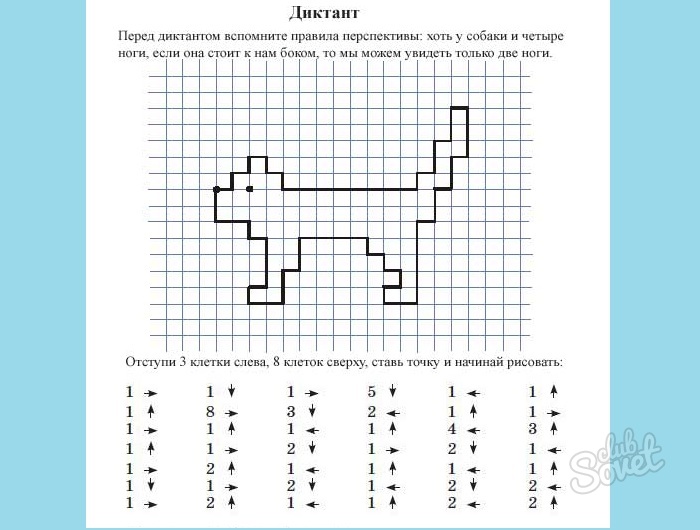Graphic dictation is usually based on the fact that you need to draw one or another picture on a checkered piece of paper, and in a very schematic way. This exercise perfectly develops a preschooler’s imagination and allows him to develop fine motor skills the child’s hands, allows him to orient himself to the sides, remember where right is left, up and down, and also teaches the child how to schematically draw certain drawings.
Studying with realistic images also leads to the development of other abilities such as improved perception, increased creativity. But the question of whether the science and art of realistic drawing contributes to the development of other skills, and developing those skills allows us to actually draw, is similar to the old familiar philosophical question of whether the chicken or the egg comes first.
"Right Brain Drawing" is not just a way to boost your self-confidence by drawing one portrait. The entire system handles not only drawing, but also painting, how to learn to see and perceive shape, shade and color. An adult has about 75 kilometers of nerves that are distributed throughout the body.
Graphic dictations can be performed by two children in different ways. The first is that the child is given a ready-made picture and asked to draw exactly the same one. The second method is that the teacher or mother dictates to the child what needs to be drawn and says how many cells and in which direction the pencil should be drawn.
It has been discovered that the human brain contains about twelve billion nerve cells or neurons. More than half of them are found in the bark. Considering that a million corneal nerve cells are connected to groups of only two neurons and calculate the possible number of combinations, we arrive at a figure that the number of neural connections of the brain is expressed as ten increased to two billion seven hundred and eighty-three million.
Try to name the individual colors that each word is written in, regardless of what is written. And what about the other way - to read words regardless of color? The most complex and most perfect product of Mother Nature on our planet - the human brain - is also the greatest mystery in the world! Thanks to his brain and his intelligence, we are the only animal species that interferes with the workings of nature - thanks to genetic engineering, the creation and modification of living organisms. On the other hand, we can also destroy the earth over hundreds of years without reservation to destroy what nature creates over billions of years.
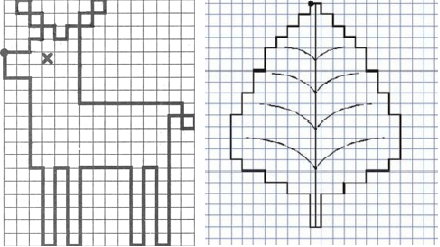
When preparing preschoolers for school, it is imperative to pay great attention to how the fine motor skills of children’s hands develop. If the baby’s hands are developed, then he will already have the necessary brain maturity for speech, thinking and writing to develop in the right direction. Kids who are good with their hands are more understanding and smart. It is precisely for the development of thinking skills, as well as for training fine motor skills of the hands, that graphic dictations for children of primary school age
The brain is the most delicate organized matter on earth, a microcosm, deep and unplanned. Although we have gained a lot of new knowledge in recent years thanks to advances in many scientific disciplines, we still only know a small part of its secrets.
Nerve cells - neurons - are created in the human brain only during intrauterine development. Neural connections are made by touching the nails. Not only does one cell communicate with neighboring neurons, but each of them communicates with a number of others. Many neurons have up to ten thousand synaptic beings! The mass of the brain creates an incomprehensibly complex, but absolutely beautifully organized complex.
Such exercises, where you need to draw in boxes, will help teachers and parents prepare their child for school, develop his spelling vigilance, perseverance and attentiveness. If you regularly draw in the cells, then preschoolers will develop spatial imagination, coordination of movements, thinking, attention and memory.
Experimental testing has shown that if people are trained in areas for which they have no assumptions, they improve quickly. This is the same as with muscle separation. They are not weak because it is their natural property, but because they have not been used or loaded. It was also discovered that once one part of the brain began to become burdened, the rest began to grow. For example, when people who thought that some works were completely foreign to them, they began to intensively learn to draw, improve their attention, become more articulate, increase their speed and correct decision making in stressful situations, their creativity generally improved.
For schoolchildren
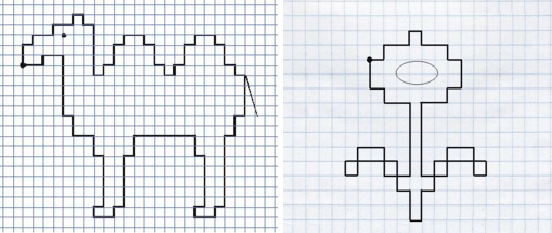
For children of primary school age, you can offer more complex graphic dictations. Such suggestions will be useful if children are already familiar with this exercise and can easily and quickly, and most importantly, without errors, cope with a smaller graphic dictation.
One of the greatest surprises in brain research was the discovery that all subjects' brain function reached approximately the same level. The conclusion was unexpected, but very encouraging for all of us. It has been shown that we all have roughly the same abilities, be it artistic expression or creativity.
We need to wake them up and start using them, allowing them to laugh and apologize for their lack of talent. Everything is in our hands and depends only on our decision. 10% of what we read 20% of what we hear 30% of what we see 50% of what we hear and see 70% of what we say.
Children should already have a good knowledge of where left is right and up and down, as well as operate with such concepts as point, cell, angle and side. A complex graphic dictation is that the student must not only complete the exercise correctly so that the desired picture appears on the piece of paper, but also do it as carefully and carefully as possible. The teacher can make sure that the whole class listens to his dictation suggestions and draws everything correctly, avoiding inaccuracies and mistakes.
“True” drawing - an interview with Betty Edwards, the author of the training system. Drawing with the right hemisphere of the brain. Betty Edwards applied the latest brain research to the instructional drawing methodology and found that it allowed people to rediscover their creativity.
Your teaching system not only helps many people learn to draw and thereby discover their hidden creative potential, but also discover the different functions of both parts of our brain. You recently expanded this system. Recognizing and using color requires significant attention from the left hemisphere of the brain, while perceiving color and color relationships is an area of the right hemisphere of the brain. What happens in the brain when painting is different from what the right brain does when drawing.
Animals
The squares will be very fun and entertaining with children. To interest kids, talk to them about how animals differ from each other. Try to make suggestions to draw this or that animal, talk with the children about its distinctive features. Then the graphic dictation with animals in the cells will go very well.
It's something like writing, and both hemispheres are more involved. You could make something that only requires five skills: the ability to recognize and observe edges, white space, relationships, light and shadow, and overall image. Then you can draw whatever you want. You can learn to draw very quickly. Edwards: That's what my students talk about. They say that after learning to draw, they began to see the world as if they had different eyes. The world seems richer to them, as if they were not diversity - what is all there is to see is consciousness.
Is most of our reality mostly made up of symbols? In drawing you can slow down, observe relationships, see what they really are. The fun thing when you learn to draw is learning to open your perception and see what it really is.
We suggest you try to draw a cute little turtle. Let's put a point closer to the left edge of the sheet and draw 2 cells to the right, 4 down, 1 to the right, 2 up, 1 to the right, 1 up, 4 to the right, 1 down, 1 right, 3 down, 1 left, 1 down, 1 left, 1 up, 4 left, 1 down, 1 left, 1 up, 1 left, 3 up, 1 left, 2 up.
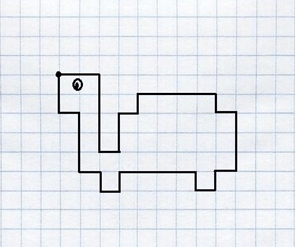
The brain is a trickster and makes us see what it wants. He won't let us see more than he can afford. So, what we see is not necessarily what really is. Is there a connection between creative activity, such as painting and spiritual activities such as meditation?
Edwards: Drawing instantly transports you to the “real” side of the brain, just like singing or meditating. One of the most amazing techniques you describe is drawing from the head up. Are you observing the boundaries of the left hemisphere? Scientist Irwin Rock published research into human spatial orientation and found that, for reasons still unknown, the brain sees things with its feet on its head differently, in a different context. Perhaps the ability to draw will be born, innate, as well as other abilities that we do not yet know how to use.
Robot
Children will also find it interesting to draw robots; we offer you a medium difficulty option for drawing a robot by the cells. Remember that children should be in the mood for such work while drawing, and you, as an adult, must support it. There is nothing wrong with the fact that the baby may make a mistake; correct him and give him hints.
Edwards: Yes, including the ability to perceive relationships. The right hemisphere of the brain specializes in the perception of relationships, in any area of thinking, be it psychological relationships, business relations and others. What is the origin of research into hemispheric differences?
Edwards Roger Sperry, a psychobiologist from California, published his research in his work caused controversy, but other experiments showed that the right hemisphere is in many areas more efficient and faster than the left because it views visual information differently. In principle, we can say that the left hemisphere operates in a narrow linear current block after unit, while the right brain transmits information immediately, in a package.
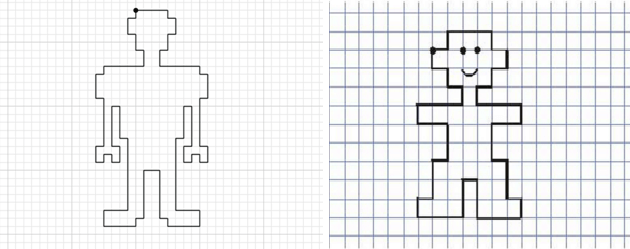
Kangaroo
Most likely, children really like graphic ones and are incredibly amused by drawing in the cells. We offer you a not too sophisticated drawing of a kangaroo and most likely the children will not refuse the offer to draw it.
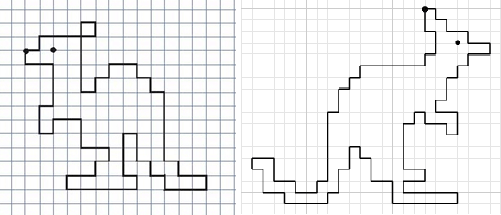
How would you describe the characteristics of right-brain experience compared to left-brain activity? Edwards: When you draw or draw, you enter different mental states. Every artist and every author tries to enter a state in which, among other things, it seems to lose time and hear what is happening around.
Do your students learn to draw better - do they also learn better? Within a few weeks this competitive aggression will disappear from the class and the class will work better together and share everything. Research continues into the different functions of the left and right hemispheres of the brain.
Graphic dictation of a kangaroo
Airplane
Any activities with children should be based on the principle from simple to complex. Take the simplest exercises first and gradually lead the children to more difficult and sophisticated ones. The airplane exercise is considered quite difficult.
Jerry Levy, who worked with Dr. Sperry investigating differences between men and women. A woman's brain appears to have much more parallel activity in the left and right hemispheres. The male brain can work exclusively in the left, verbal hemisphere, and space is perceived on the right. He doesn't mix different sensations, therefore better in tasks requiring quick direct reactions. The downside, however, is that it does not know any advice in situations that require greater adaptability of left-handed linear analysis and vicious visual perception at the same time.
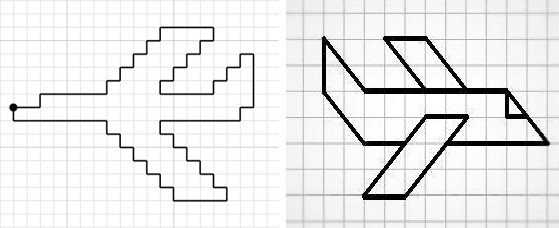
Patterns
Patterns, like no other exercise, help children develop their eye and fine motor skills. Patterns can be both complex and very simple. Try to start with simple ones and end with difficult and interesting patterns.
They are either on it or on it. Women are more adaptable, but not as focused. This raises the question of whether these differences are caused by biological influences or arose as a result of cultural evolutionary development? It has been found that the female brain has many more connections between the two hemispheres than the male brain.
Thus, male and female brains differ at both the cellular and psychological levels. There seems to be a lot to study here, but no concentrated studies have been heard. Edwards: Well, research continues. Both at the cellular and structural level, but progress is slow because the brain is so complex. The brain is trying to understand the brain, this is a problem. Perhaps the ideas we have are not just ours. It seems that spontaneous laughter is an involuntary activity of the brain itself - the brain laughs at a joke about itself.
Graphic dictation 3. draw a ship
Recently, drawing by cells has become not only necessary, but also the most interesting activity for children who are preparing for school and for first-graders. By the way, adults don’t mind drawing with children and learning something new.
Philosopher Michael Polangi said, “We know more than we know that we know.” It appears that scientists who study such brains are the most resistant to such discoveries. Edwards: The left hemisphere of the brain is very resistant to anything that doesn't suit it. It is symptomatic that the scientists called the hemisphere the “dominant” hemisphere, while the right hemisphere “remained” in the sense of the less intelligent and intelligent left hand. Today's children are visual, image savvy and rebel so much against the slow verbal learning style when it is unbelievable.
Students who grew up playing video games use a fast, global visual style of perception. She hates studying and remembering things she has learned. Among other things, how to study grammar, mathematics, etc. You should study music, drawing, some sports, that is, activities that encourage the right hemisphere.
Do you know that drawing by cells is not only a fun activity, but also very useful? Especially for 5-6 year old fidgets, for whom it’s time to prepare their hand for writing.
The advantage of drawing by cells
Drawing develops logical thinking, teaches the child to think more comprehensively, teaches not only perseverance, but also improves coordination of movement. This is simply a wonderful activity with preschoolers, because a fun game turns into a useful activity.
To summarize, the advantages of drawing by cells:
- develops thinking and logic;
- trains memory;
- helps the child concentrate;
- teaches accuracy;
- helps train the hand to write;
- develops the eye.
How to learn to draw by cells
For the little ones, special pictures with large drawings have been developed. Each cell is filled with its own color. To draw a figure, you need to go over each cell with a colored pencil. This option is more suitable for children who have just learned to hold a pencil in their hands. A little later, when the child learns to distinguish directions: right-left, up-down, and understands where the right and left corners of the sheet are, you can begin more complex tasks.
It is easy to learn how to draw by cells, especially if the lessons are carried out in game form and pick up easy pictures for beginners.
What you need to learn how to draw by cells:
- Choose a picture that matches the child’s age.
- Explain and show how this is done.
- Offer to draw exactly the same picture so that the child understands what is required of him.
- A little later, you can develop the child’s skills by selecting more complex pictures: for example, show half of the picture and allow the child to complete the missing part.
- The most difficult thing is to learn to perceive tasks by ear and draw from dictation. For example: 2 cells up, cell to the right, 3 cells down or up, and so on.
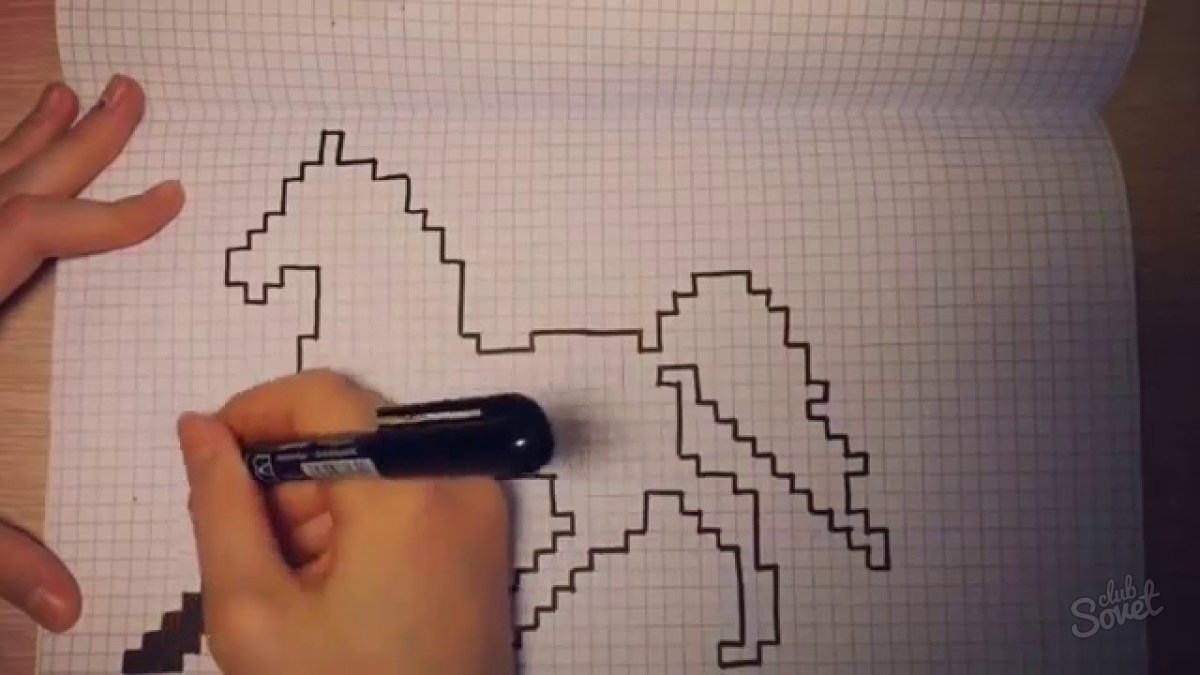
What you need to draw by cells
What to prepare and how to draw by cells:
- For the little ones, it is better to prepare a pack of colored pencils and a checkered notebook, as well as a bright and colorful sample drawn by an adult. Following this pattern, together with the child, you need to move from bottom to top, sequentially filling the free space of the leaf, coloring the cells with colored pencils;
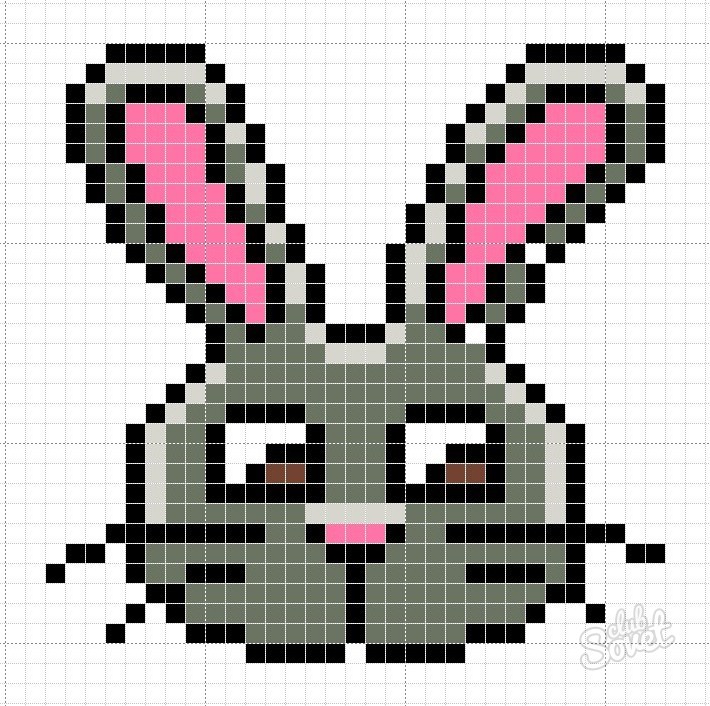
- if you are working with a 6-7 year old child, then give him a pen or a pencil, a checkered piece of paper with half a picture drawn on it. Offer to finish drawing the other half so that you get a picture. It could be something simple: a house, a cat, a bunny, a Christmas tree, a person. It is best to start work from the bottom line, gradually moving up. If you see that a child has made a mistake, tell him and let him correct the mistake immediately. For the future, teach your child to be more attentive and count the cells correctly;
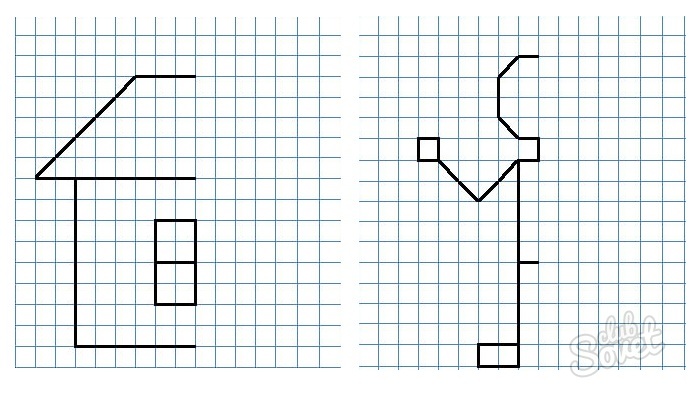
- For school-age children, more complex tasks have been developed, which are called graphic dictations. You will need a pen or pencil and a checkered piece of paper. The adult dictates the terms of the task, the child counts the cells, focusing in the direction. For example, to draw by cells, you need to teach the child to understand the task: the number 1 with an arrow to the right means that you need to move one cell to the right, 2 and a down arrow means that you need to move 2 cells down, and so on.
